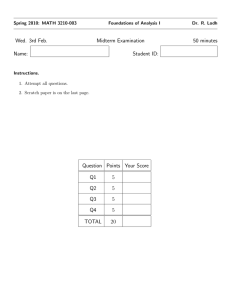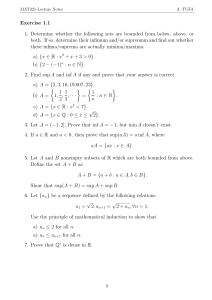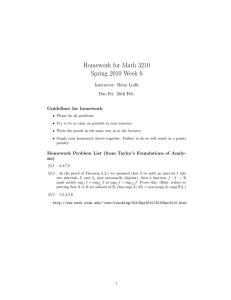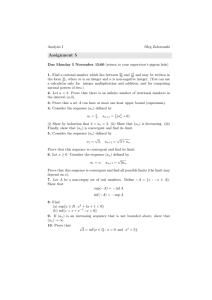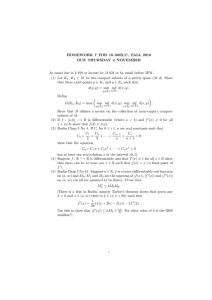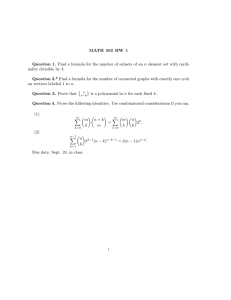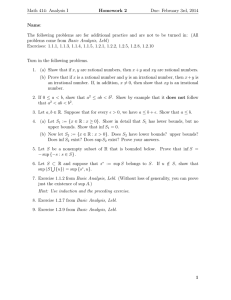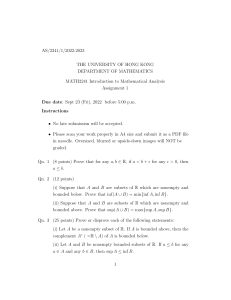Sample Midterm Problems Math 3210 Spring 2010 Instructor: R´ emi Lodh
advertisement
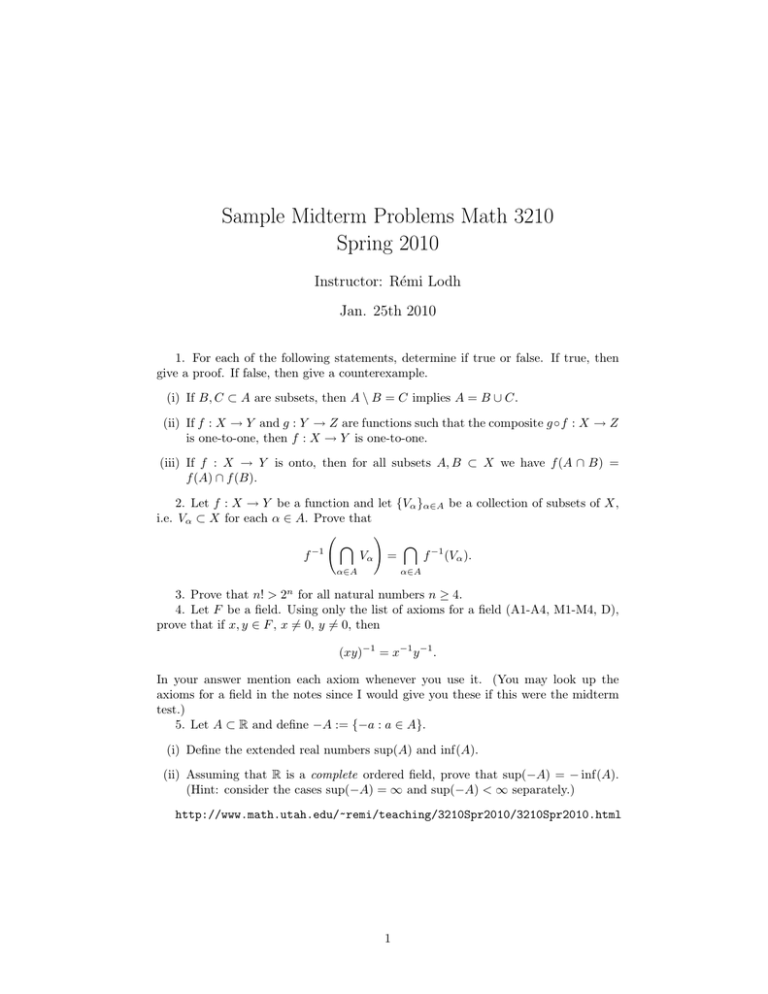
Sample Midterm Problems Math 3210
Spring 2010
Instructor: Rémi Lodh
Jan. 25th 2010
1. For each of the following statements, determine if true or false. If true, then
give a proof. If false, then give a counterexample.
(i) If B, C ⊂ A are subsets, then A \ B = C implies A = B ∪ C.
(ii) If f : X → Y and g : Y → Z are functions such that the composite g ◦f : X → Z
is one-to-one, then f : X → Y is one-to-one.
(iii) If f : X → Y is onto, then for all subsets A, B ⊂ X we have f (A ∩ B) =
f (A) ∩ f (B).
2. Let f : X → Y be a function and let {Vα }α∈A be a collection of subsets of X,
i.e. Vα ⊂ X for each α ∈ A. Prove that
!
\
\
−1
f
Vα =
f −1 (Vα ).
α∈A
α∈A
3. Prove that n! > 2n for all natural numbers n ≥ 4.
4. Let F be a field. Using only the list of axioms for a field (A1-A4, M1-M4, D),
prove that if x, y ∈ F , x 6= 0, y 6= 0, then
(xy)−1 = x−1 y −1 .
In your answer mention each axiom whenever you use it. (You may look up the
axioms for a field in the notes since I would give you these if this were the midterm
test.)
5. Let A ⊂ R and define −A := {−a : a ∈ A}.
(i) Define the extended real numbers sup(A) and inf(A).
(ii) Assuming that R is a complete ordered field, prove that sup(−A) = − inf(A).
(Hint: consider the cases sup(−A) = ∞ and sup(−A) < ∞ separately.)
http://www.math.utah.edu/~remi/teaching/3210Spr2010/3210Spr2010.html
1
